© ROOT-NATION.com - Use of content is permitted with a backlink.
Review, testing and recommendation of ALL available in Ukraine Ampligame series, aka A-series, from Fifine. More precisely, streamer microphones Fifine A6V, Fifine A6T, Fifine A6VW, Fifine A8, Fifine AM8, Fifine A8 Plus, Fifine A8W, and Fifine A9. Well a quick explanation of how not to get lost in the ranges and indexes of a given company. Because it’s much simpler than you think.
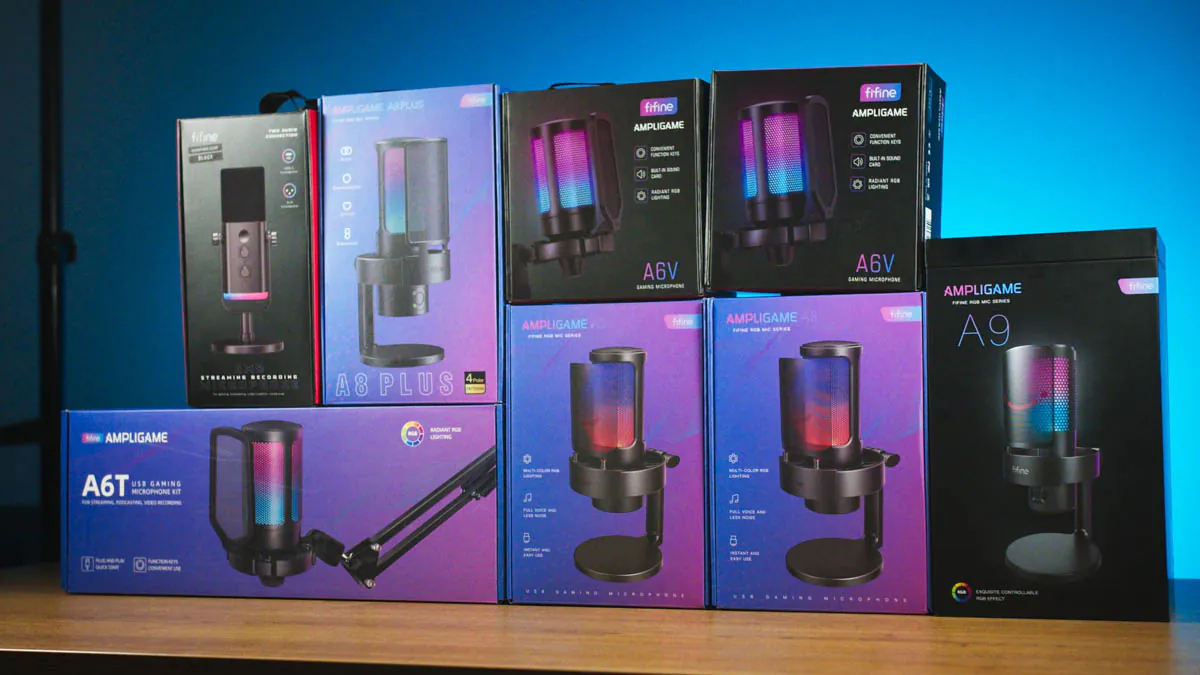
Fifine A6V, A6T, A6VW, A8, A8W, AM8, A8 Plus and A9 video review
Both a review and a comparison of quality in conditions that are far from ideal:

Market positioning and prices
But I’ll start with the price. Because each of these microphones, even the A9, doesn’t cost that much. Actually, it is the most expensive one of the set, it costs $150. With a discount, however, at the time of writing it can be purchased for $123.
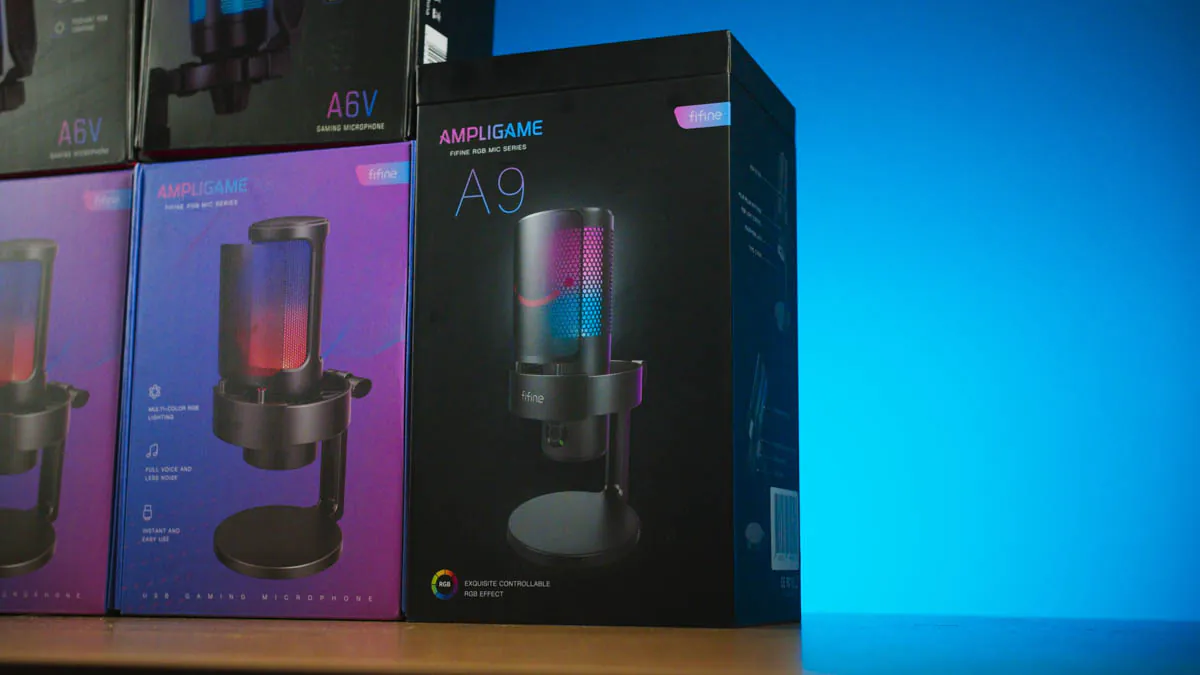
The Fifine A8 is priced at $95, with a discounted price of $76. Fifine A8W is the same price. And not for nothing, I will explain why.
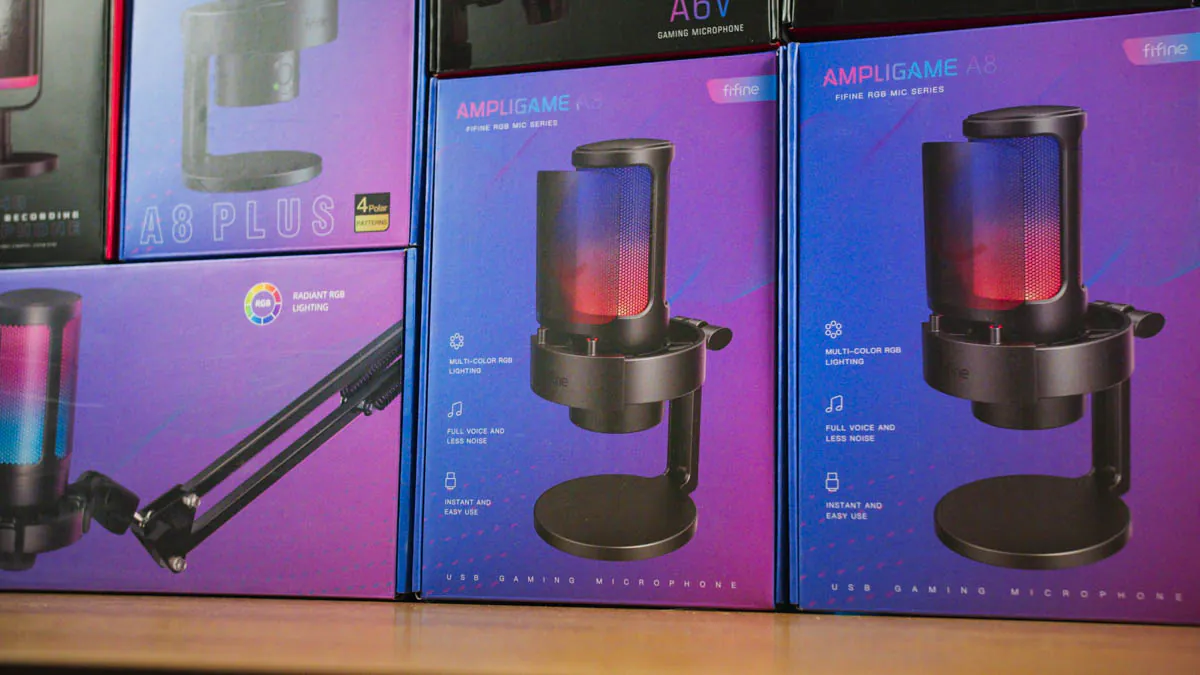
Fifine A8 Plus costs $110, with a discounted price of $93. The regular Fifine A8 is $95/$75. Fifine A6V and A6VW is $55, Fifine A6T is $71. Prices are official, discounts are temporary, as always.

I would also like to point out that Fifine has an advantage over a huge number of similar companies. Fifine is officially sold in Ukraine, has its own Ukrainian-language website and provides an official 12-month warranty. Of course, the latest novelties from the company may first appear on AliExpress, but as long as you order them and they reach – they are likely to appear on the official site. And then – see the advantages above.
Package and indices
Next. Fifine, the Fifine A6T, Fifine A6V and Fifine A6VW are essentially one microphone, the Fifine A6V. The A6T refers to the optional equipment consisting of a pantograph leg with table mount, the A6V, respectively, comes with a 3/8″ threaded spider mount, pop filter, table tripod and Type-C cable. The A6VW is also an A6V, just in white colour.
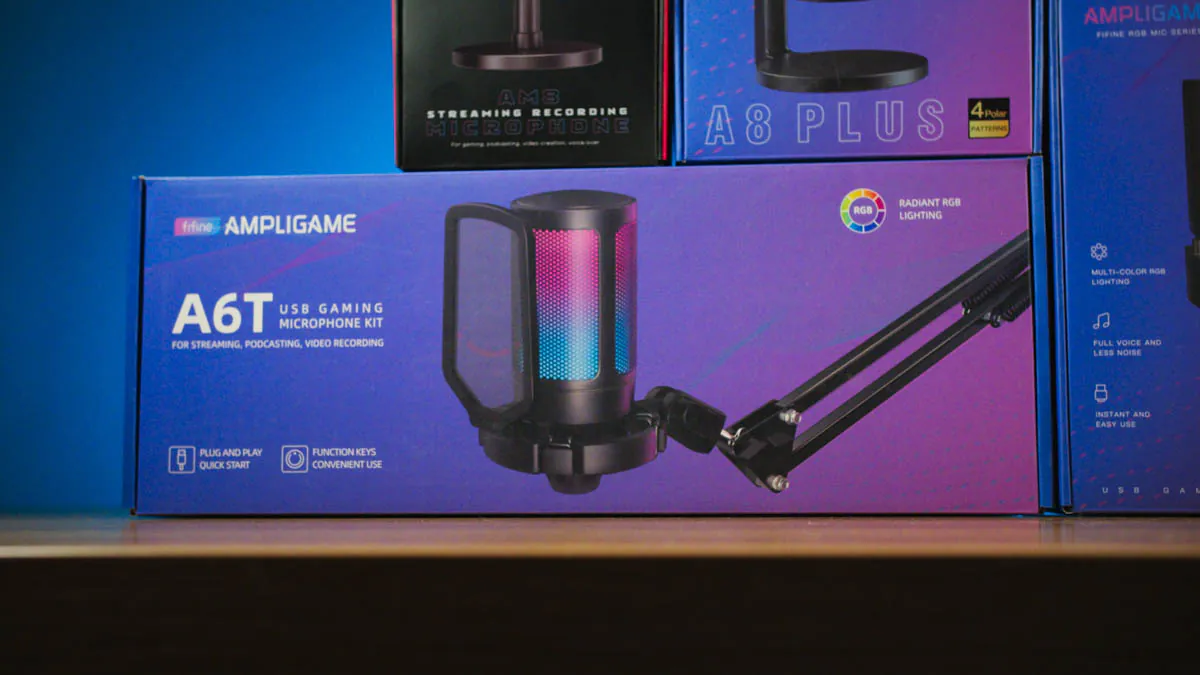
The same applies to the Fifine A8 and Fifine A8W. I note that the boxes of the black and white models are the same. The front print is the same, the naming on the box is also the same, and the only indicator of the difference is the sticker on the side.

This situation does NOT apply to models with the V index. It means that a tripod is included instead of a stand. Although the index sometimes means different microphone models – A8 and A8V, for example, are not similar in characteristics.
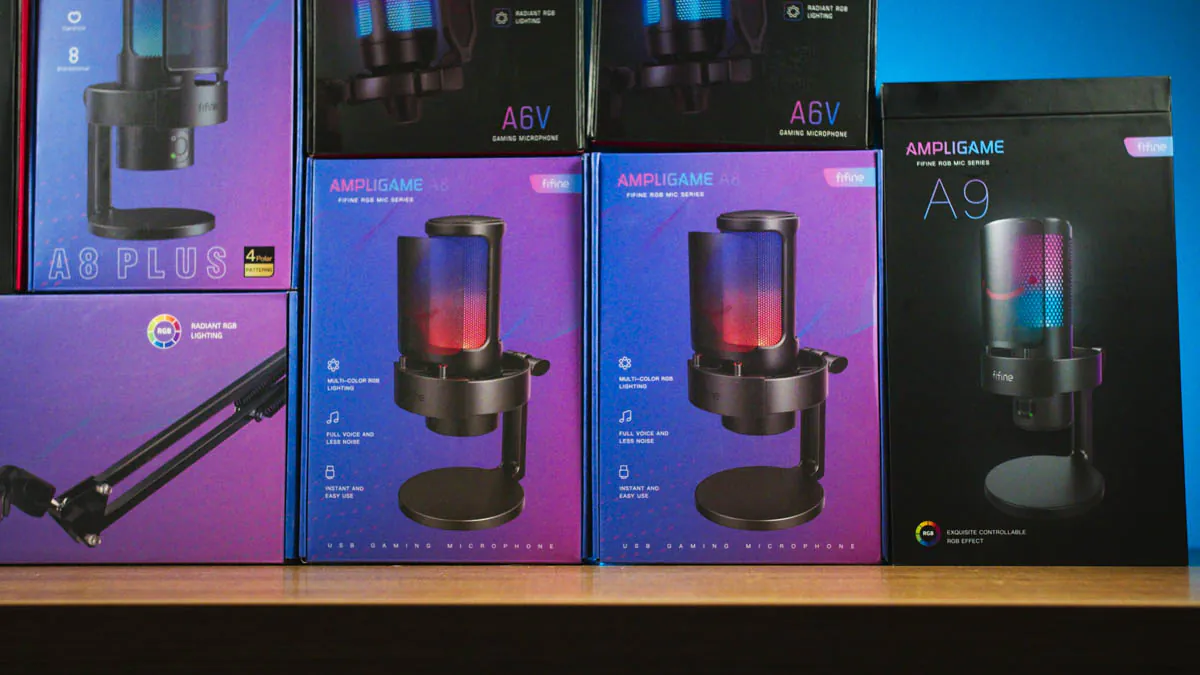
However, the overall package of the microphones is very similar. The A6V, A6T and A6VW include a rigid table stand, a Type-C cable and a removable pop filter. Plus an optional 3/8-inch threaded mount.
The Fifine A8 Plus has the same kit, and the pop filter is removable, although it’s pre-installed on the mount beforehand. The Fifine A9 has a similar situation, Type-C and the 3/8-inch mount come separately in the box. The Fifine AM8 differs in that the bracket and foot are split, threaded, so it doesn’t come with a 3/8″ mount like the others.

Common to all kits are a Type-C cable and an instruction manual with specifications. None of the models lacks the ability to be placed on a table right out of the box – because, yes, many semi-pro microphones of this type come with the expectation that you’ve already bought a pantograph in advance.
Read also: FIFINE Ampligame H6 and H9 gaming headsets review and comparison
And the data cable as well. So you can’t use the microphone out of the box. That’s not the case here. Plus, all microphones have the ability to tilt up and down and either a stand with a rubberised base or rubberised feet. The exception is the A6T, there the pantograph base is foam rubber. The latter, who does not know, is used as an anti-slip material.
Technical characteristics
Very briefly – about each of the microphones. All of them (except AM8) are condenser mics, not dynamic. All of them are cardioid, which means they’ll pick up maximum sound from the front, less from the sides, and almost nothing from the rear. That said, the A8 Plus and A9 models also have a directional switch, and you get stereo, omnidirectional, and bi-directional directional options in addition to that.
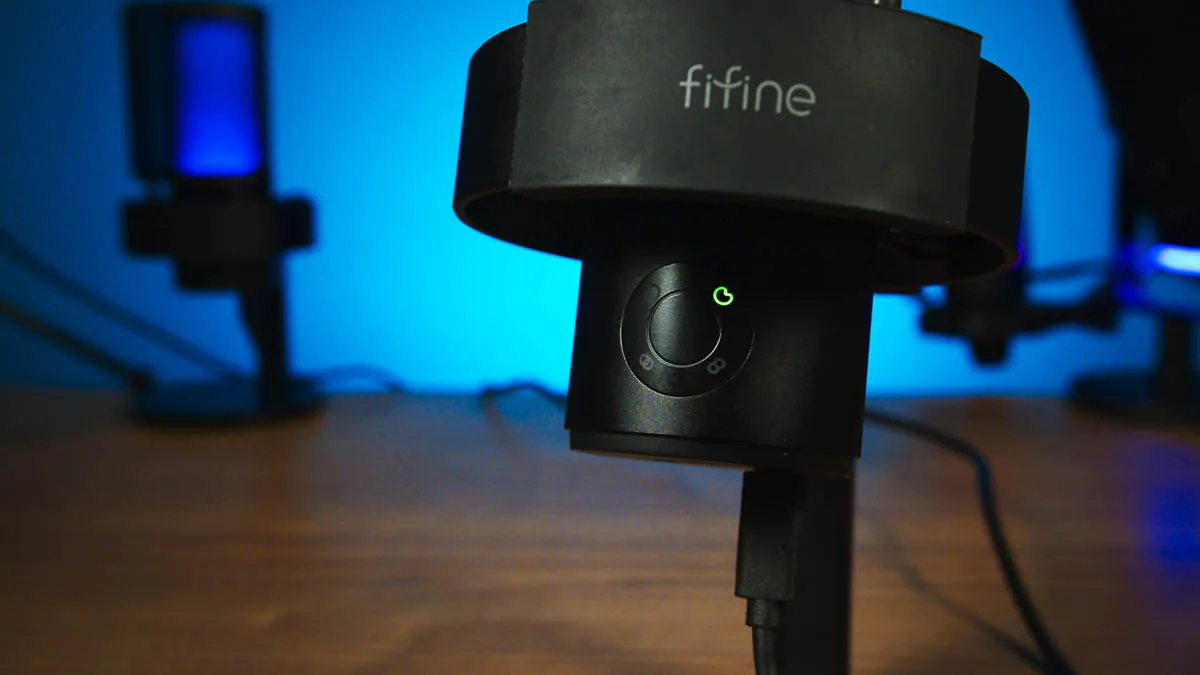
RGB backlighting is available on all models, from the cheapest to the most expensive. In all models except AM8 it is the same and very, very cool. You can turn it off without turning off the microphone and change the colours on all models except A6. At the same time, all models have a volume control knob, though in different places, there is a mute button on the body and at least one Type-C connector.
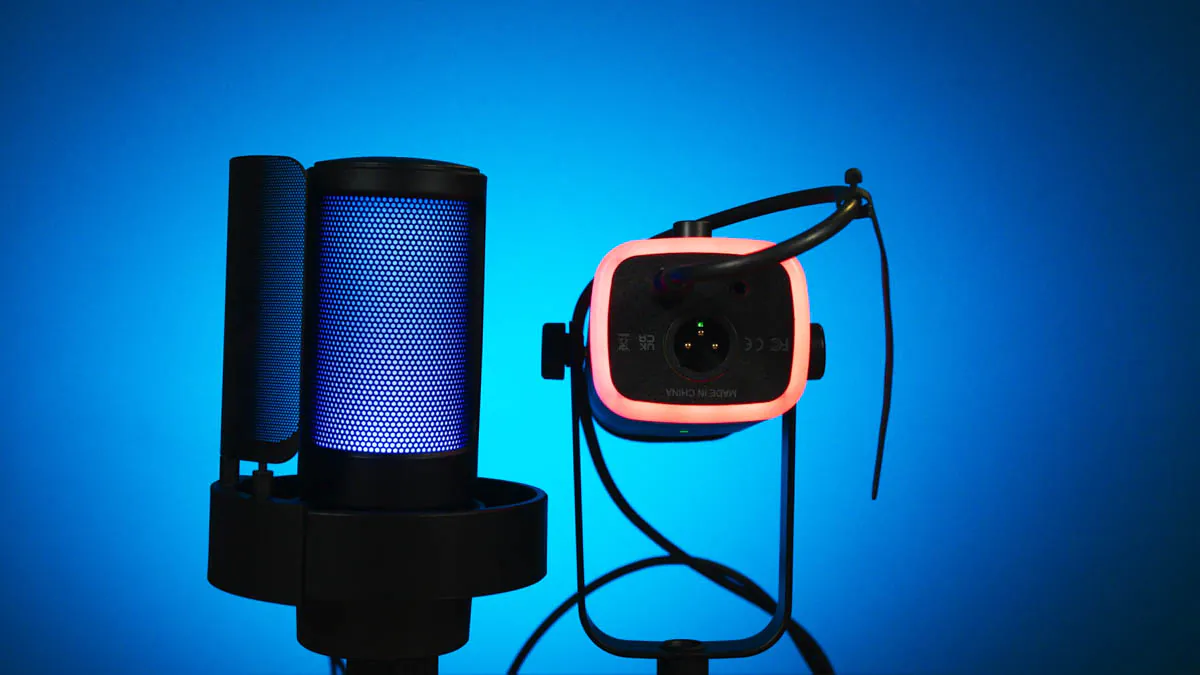
In terms of characteristics, all microphones are almost identical. Sensitivity is from minus 43 to minus 40 dBa, plus or minus 3. The signal-to-noise ratio is less than 70 dB. Frequencies differ the most, with the A6V and AM8 ranging from 16 to 18000 Hz. For A9 – from 50 to 15000 Hz, for all others – from 20 to 20000 Hz.
Fifine A6V/A6VW/A6T
Now for the more specifics. I personally tested the Fifine A6V for sound quality first, because if I can recommend the cheapest microphone, I can recommend the most expensive one. And the A6V proved to be simple and easy to use. A 200cm USB cable, on Windows 11 everything works without drivers. Plug it in and talk.

The microphone switch is touch-sensitive at the top, also switches off RGB. There’s a gain knob on the bottom. That’s it. The sound quality of all models will be in the video review at the end of the material, but I warn you in advance – they are all great. The sound pickup of A6V specifically is no problem if the microphone is located 10-15 cm from the mouth, even when the microphone is sharply downwards, not closer to the keyboard.
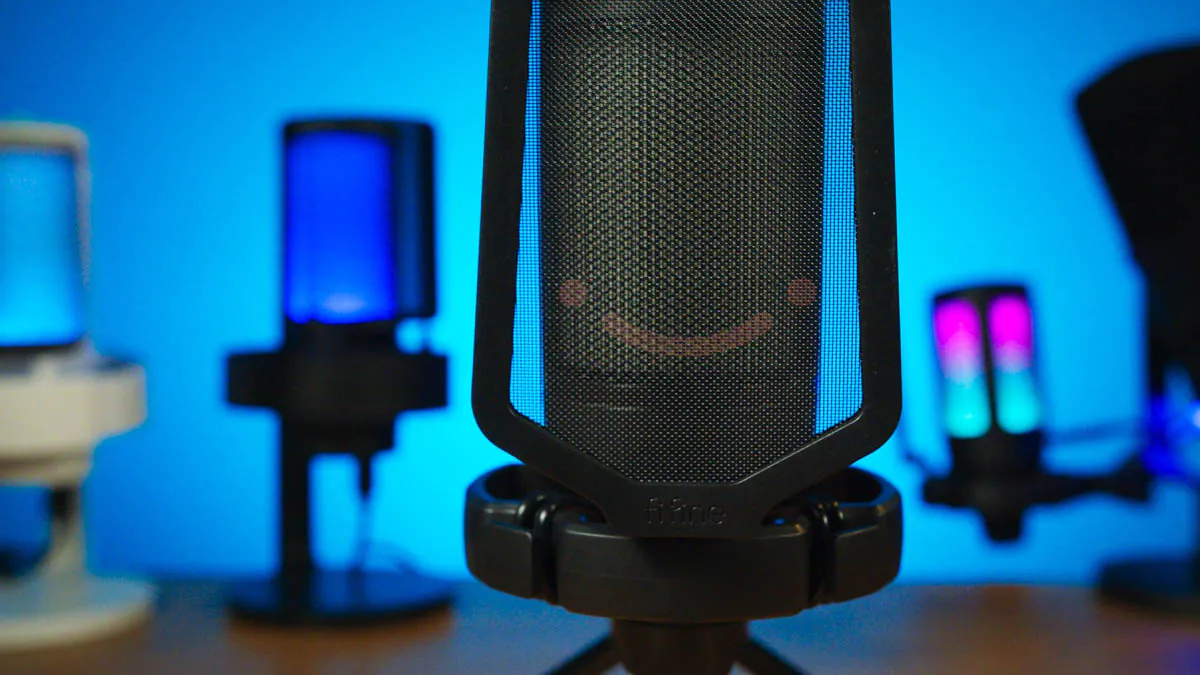
The A6VW is similar in everything except colour, so I won’t dwell on it. On Fifine A6T also, because I remind you – the model is similar to the previous ones, except for the pantograph in the kit. The pantograph is made qualitatively, although it is basic level. And if you ask what other pantographs can be in the kit – Fifine has cooler models, costing from $40 to $65.

The only additional thing I would like to mention is that the threaded pin is not standard like other budget pantographs, and therefore the clamp is extended. The good news is that the pin is impossible to lose because it cannot be removed.

And the pin clamp itself is SIGNIFICANTLY more secure, it is extremely difficult to twist the mic. I have a lot to compare, so yes – the A6T pantograph is slightly, but still better than conventional ones.
Fifine A8/A8W
The Fifine A8 is the first model with a circle stand. They are all taller than the tripods, so pay attention to that.

I also note that the USB cable is 50 cm shorter than that of the A6. However, the A8 already has RGB control, including switching the backlighting at all – pressing for 3 seconds is responsible for that. There is also a 3.5mm jack for monitoring.
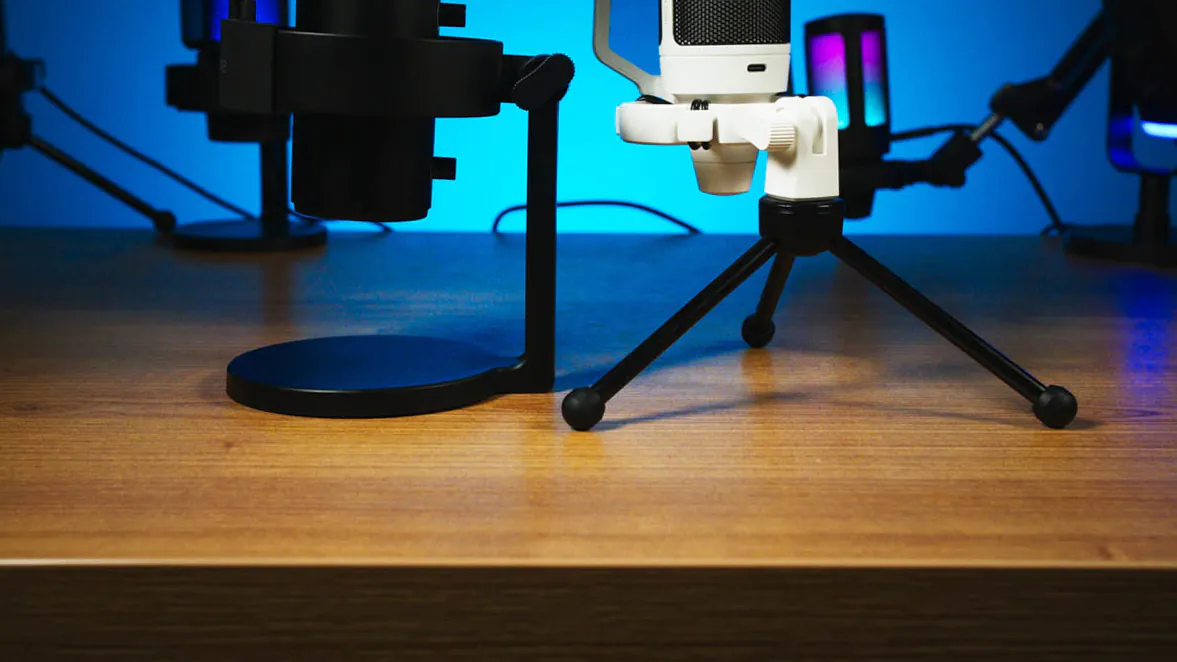
I’m surprised the backlight doesn’t have a rainbow mode, but it has gradients, static colours and the breathable mode of all the previous options.

The pop filter is removable, but it can’t move round because there are locking elements on the plastic. Yes, and the A8W is similar to the A8 except for the colour.
Fifine A8 Plus
The Fifine A8 Plus is also very similar to the A8. The differences are that the RGB button has moved downwards, the microphone gain knob has been moved in its place, and there is another knob for monitoring underneath it.

On the front of the case we have a four polarity mode switch, aka voice picking pattern.

The omnidirectional mode speaks for itself. The cardioid pattern does as well. Bidirectional mode allows you to take sound from the front and back, cutting off the maximum on the sides. The most interesting is the stereo mode – you can listen to it, as well as all of them, at the beginning of the article in the video review.

Fifine AM8
We won’t dwell on the Fifine AM8, as we have a full review of it. However, this particular article should help you choose a Fifine microphone from the arsenal I have on my desk right now. And the AM8 is one of them.
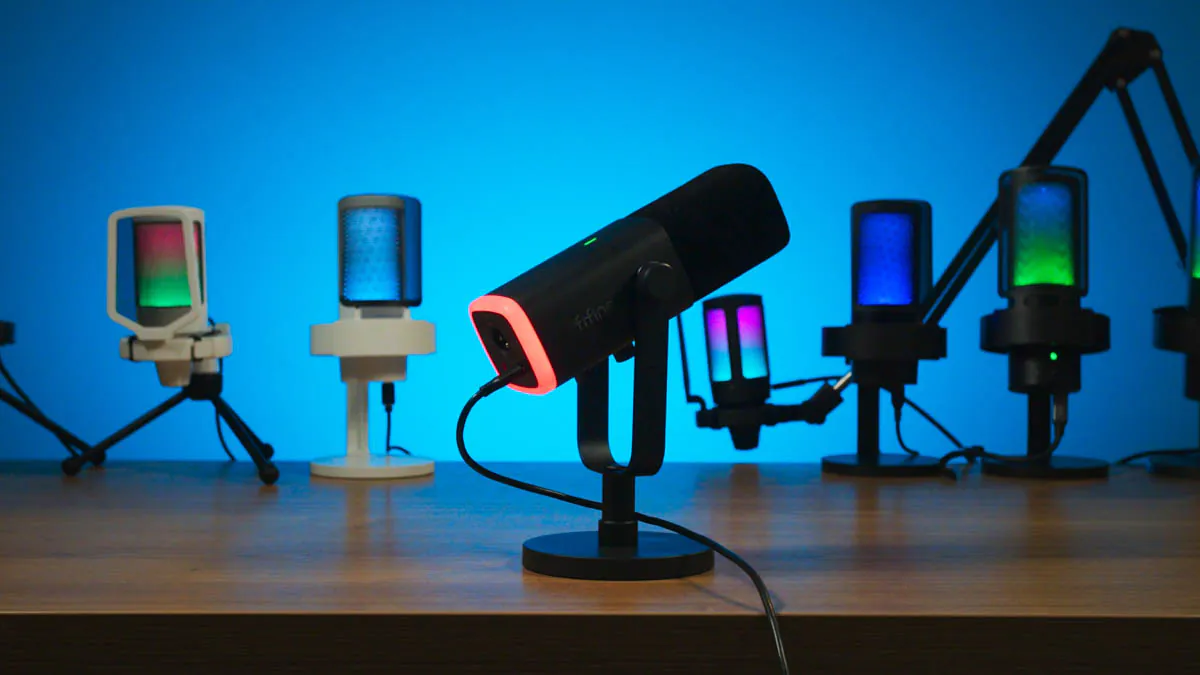
In short, though – and if you don’t want to read the full review – AM8 has the least expressive backlighting and absolutely the most versatility in terms of peripherals. That’s not to say that the AM8’s backlighting isn’t expressive, elegant, or unmanageable. Nor does it mean that all three connectors on the case, including Type-C, XLR, and mini-jack, are equivalent in operation.

And now you’re guaranteed to want to read the review. I provide the link.
Fifine A9
Lastly we have the Fifine A9. This model is much closer to the A8 Plus than to the AM8, which I didn’t expect. Actually, the arrangement of elements on the body is completely similar to the A8 Plus, starting from the gain knob and ending with the same four pickup patterns.
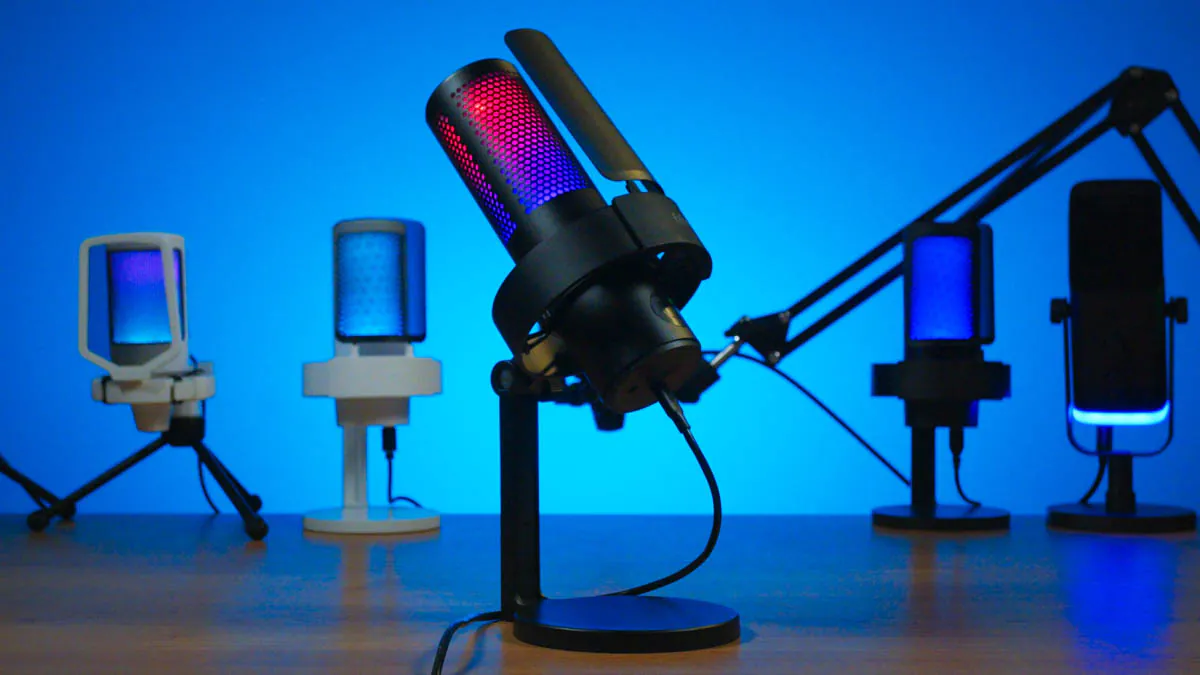
However, the A9 case itself is noticeably larger than any other case I’ve seen from Fifine. The assembly here is monolithic, metal instead of plastic almost everywhere, the cable is also longer, 250 cm, like in A6V. Actually, this model can be used semi-professionally for ASMR recording, the quality is the best here, because the price is the highest. And vice versa.
However, there are some nuances here. Support for connections is less than that of AM8. The backlight control is made in a specific way, and instead of a simple press you need to press, hold it for a little less than a second and release the sensor. However, switching off the backlight works the same way – you press the button for 3 seconds.
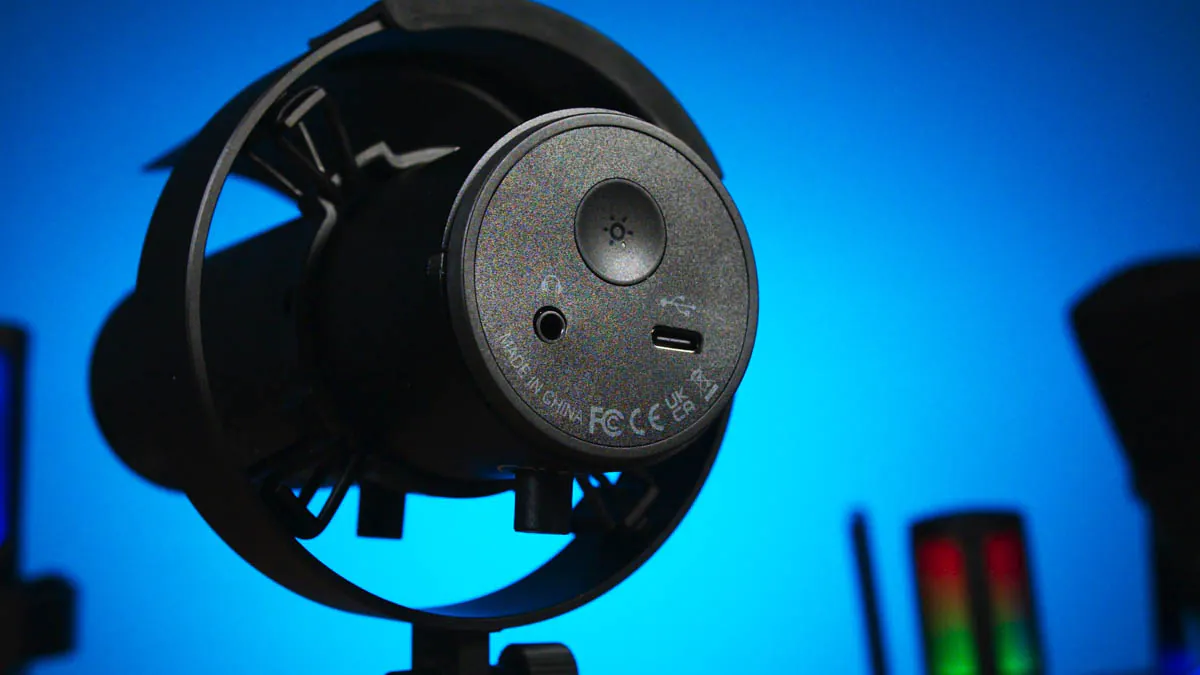
In general, even my colleagues note a much better recording quality on the A9 compared to all other microphones. And it was a blind test in real conditions – I didn’t tell them I changed the mic, they guessed it themselves. Which is frankly cool, as is the ability to write ASMR. Which is usually the priority of semi-professional studio mics, not gamer mics. And you can already base recommendations on that.
Summary
A review of the entire Ampligame series shows that Fifine has a model for gamers on every budget. Sure, the Fifine A6V doesn’t cost as much as a condenser half-working model from AliExpress, and the Fifine A9 won’t replace your $1850 Sennheiser MKH 8020. But given the budget, features, illumination, and self-contained equipment, I recommend each of these mics without a problem!
Read also:
- Fifine AmpliGame AM8 Streamer Microphone Review
- Fifine K658 studio microphone review: The flagship in all its glory!
- Sennheiser MKE 600 review: The legendary cannon microphone!

